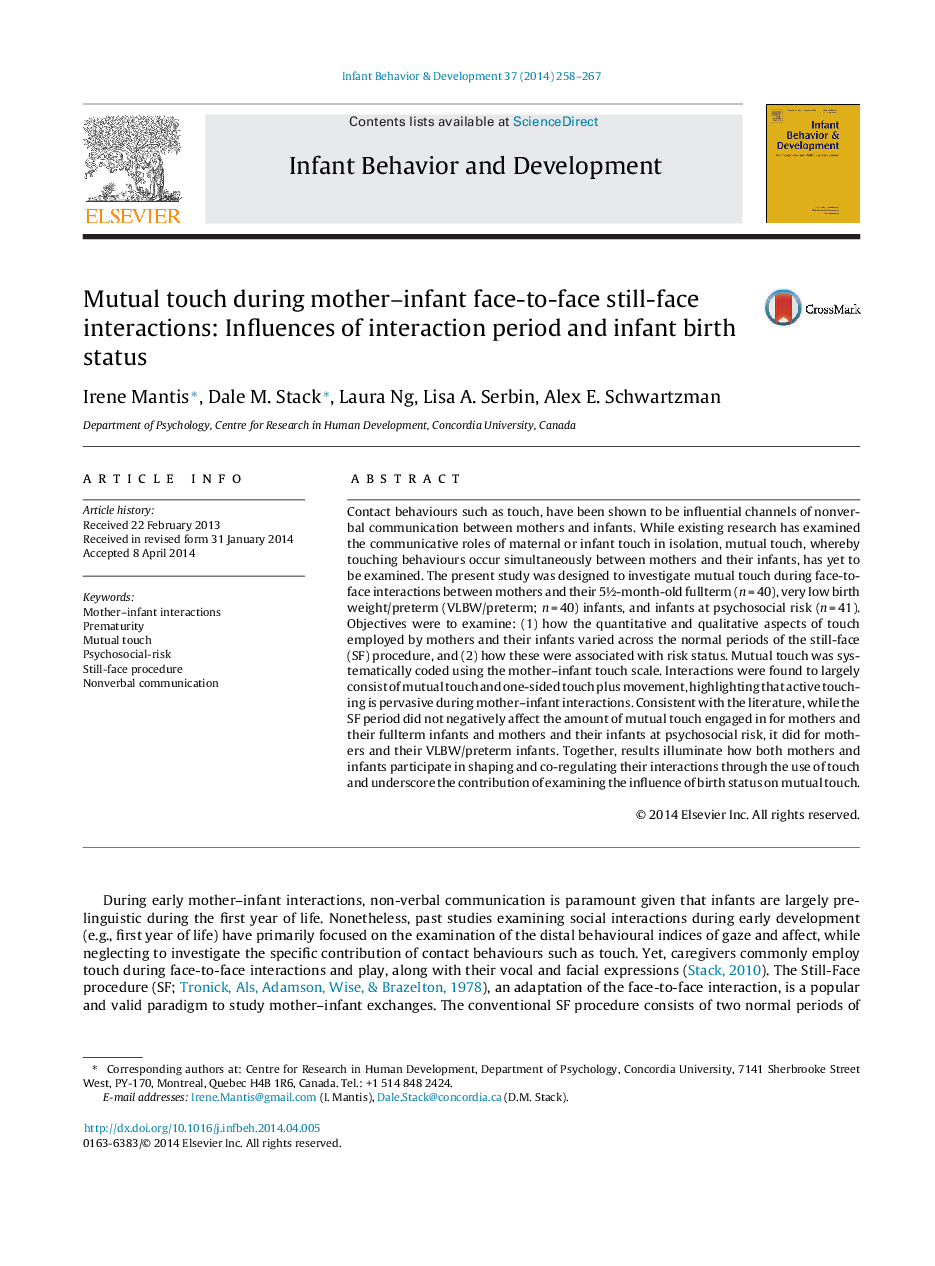| Article ID | Journal | Published Year | Pages | File Type |
|---|---|---|---|---|
| 10452648 | Infant Behavior and Development | 2014 | 10 Pages |
Abstract
Contact behaviours such as touch, have been shown to be influential channels of nonverbal communication between mothers and infants. While existing research has examined the communicative roles of maternal or infant touch in isolation, mutual touch, whereby touching behaviours occur simultaneously between mothers and their infants, has yet to be examined. The present study was designed to investigate mutual touch during face-to-face interactions between mothers and their 5½-month-old fullterm (n = 40), very low birth weight/preterm (VLBW/preterm; n = 40) infants, and infants at psychosocial risk (n = 41). Objectives were to examine: (1) how the quantitative and qualitative aspects of touch employed by mothers and their infants varied across the normal periods of the still-face (SF) procedure, and (2) how these were associated with risk status. Mutual touch was systematically coded using the mother-infant touch scale. Interactions were found to largely consist of mutual touch and one-sided touch plus movement, highlighting that active touching is pervasive during mother-infant interactions. Consistent with the literature, while the SF period did not negatively affect the amount of mutual touch engaged in for mothers and their fullterm infants and mothers and their infants at psychosocial risk, it did for mothers and their VLBW/preterm infants. Together, results illuminate how both mothers and infants participate in shaping and co-regulating their interactions through the use of touch and underscore the contribution of examining the influence of birth status on mutual touch.
Related Topics
Life Sciences
Neuroscience
Behavioral Neuroscience
Authors
Irene Mantis, Dale M. Stack, Laura Ng, Lisa A. Serbin, Alex E. Schwartzman,
